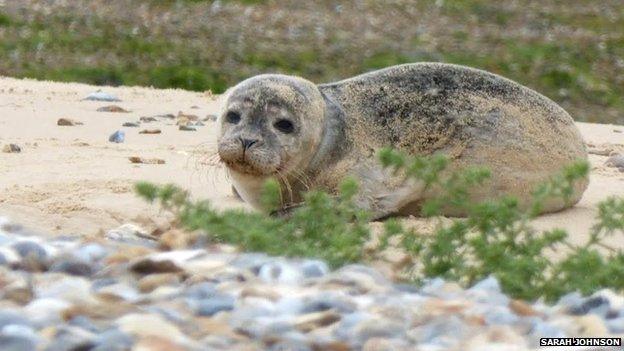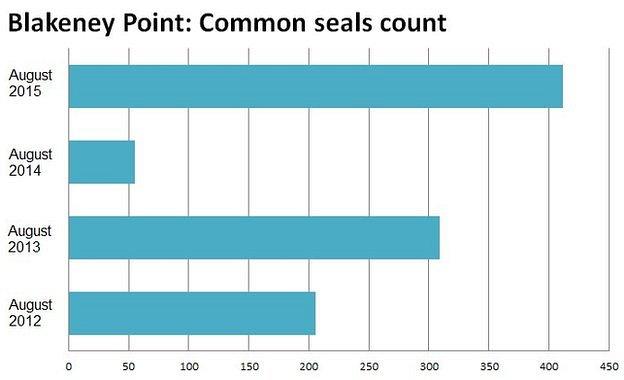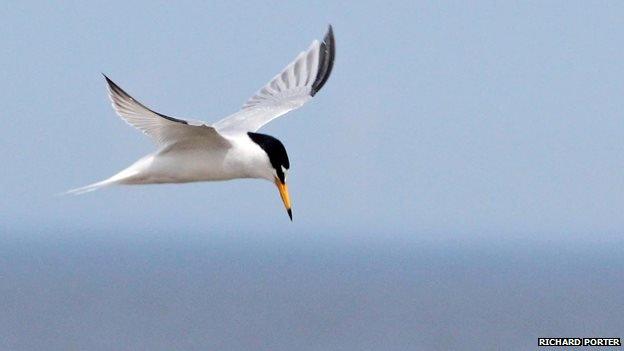Blakeney Point seals: Numbers at National Trust colony hit four-year high
- Published

More than 400 "hauled" seals have been counted on the Blakeney Point reserve in August 2015
The number of common seals at a north Norfolk nature reserve has hit a four-year high.
New figures, external from the National Trust, which manages Blakeney Point reserve, external, reveal 412 seals were counted at low tide, the largest number since 2011.
Coastal ranger Ajay Tegala said the trust was "not entirely sure" why the summer numbers had increased.
Only 55 common seals were counted during the same period in 2014.

Blakeney Point is free of natural predators, ensuring a safe rookery for the seals

Source: National Trust - figures represent a comparative week each August
"The common seal, also known as the harbour seal, has increased, but we're not entirely sure why," Mr Tegala said.
"We know they feed well close to the nearby wind farm because this is a good place for the fish to spawn.
"These numbers would certainly suggest the population is perhaps a little healthier than it has been in recent years.
"They are very cute to look at and a great draw for the tourists over the summer."

The winter breeding colony of grey seals at Blakeney has been growing year-on-year for more than a decade
The figures reflect the number of "hauled out" seals, so-called because they are counted when they haul themselves from the water up the shingle beach.
It follows a spectacular winter breeding season for grey seals along the four-mile sand spit, when pup numbers reached an all-time high of 2,425.
The population exceeding pupping levels on the Farne Islands, external in Northumberland and Donna Nook, external in Lincolnshire, and made the colony the biggest in England,

The reserve is a four-mile-long spit where dunes have formed over hundreds of years on the shingle ridge
In addition to the common seals, a colony of Little Terns has also had summer success on the reserve, with 42 adults fledging 32 young, marking "the best Little Tern productivity on the point since 2011," Mr Tegala said.

Little Terns are a summer visitor to Europe and can only be found in coastal locations
- Published17 January 2015

- Published10 January 2015

- Published6 December 2014
